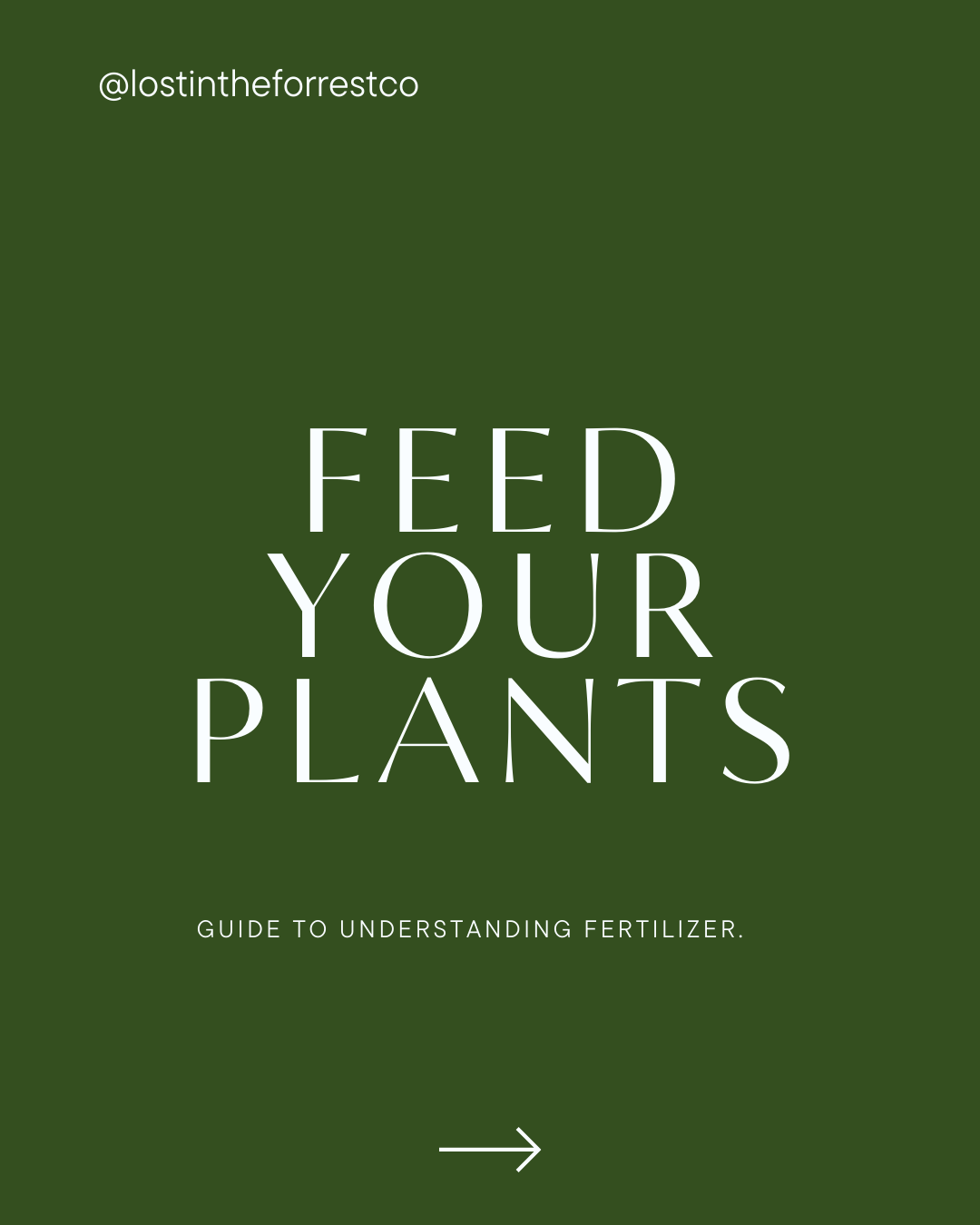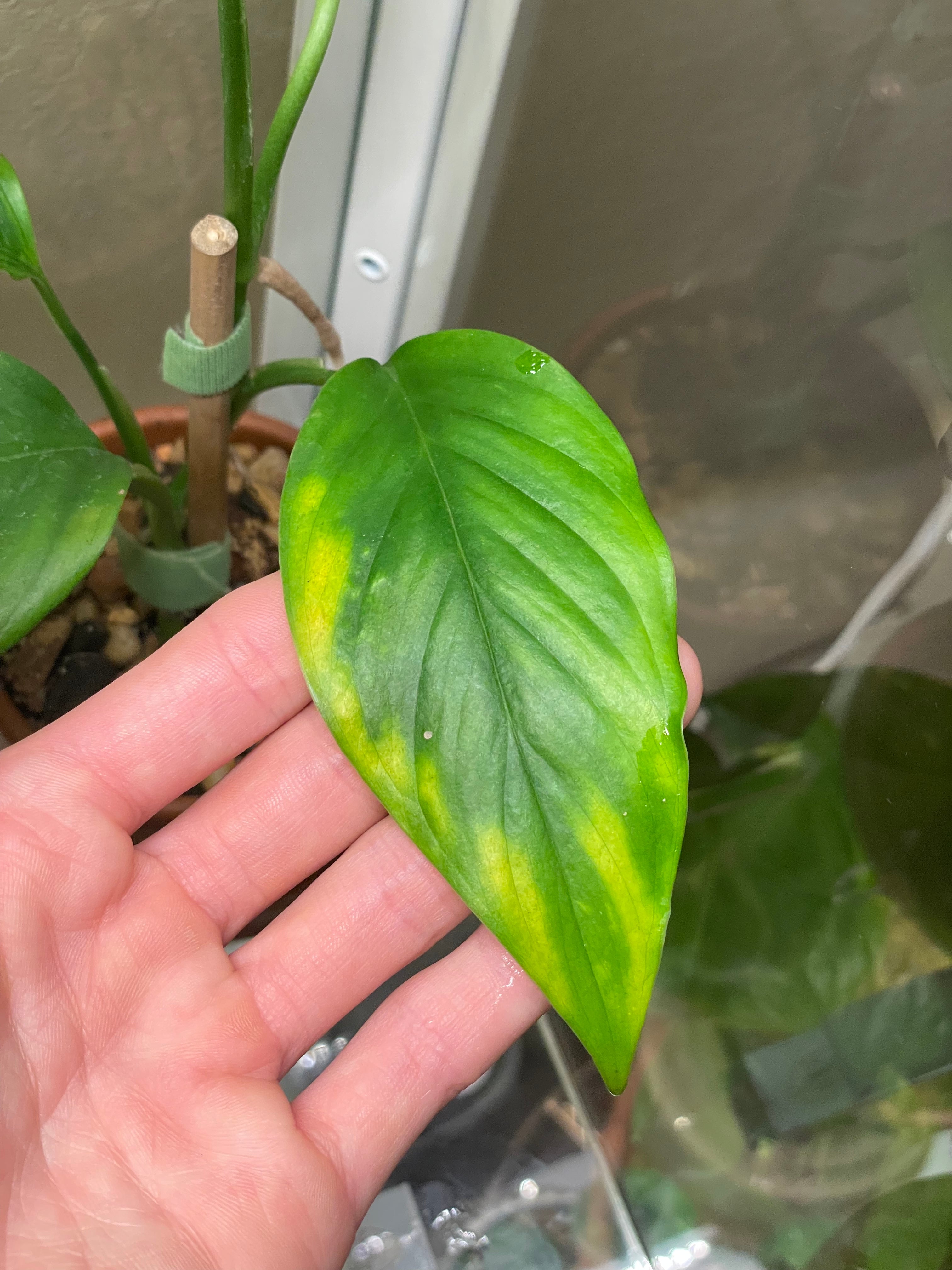Understanding fertilizer can be overwhelming and confusing because there are so many different options to select from. Like humans, plants need to be fed regularly. But it’s a little tricker; unlike a baby, your plant won’t cry when it is hungry. Thankfully, your plants will give you subtle signs that it’s time for a feeding. Now you just need to know what those signs are and what to do about them.
When plants are thirsty, their leaves can often become thin and droopy. This is because they don’t have as much water stored in the leaves. When plants need more light, they may lose some of their vibrant color or stretch to find the sun. When your plants want more humidity, the leaves can get a little crispy on the ends.
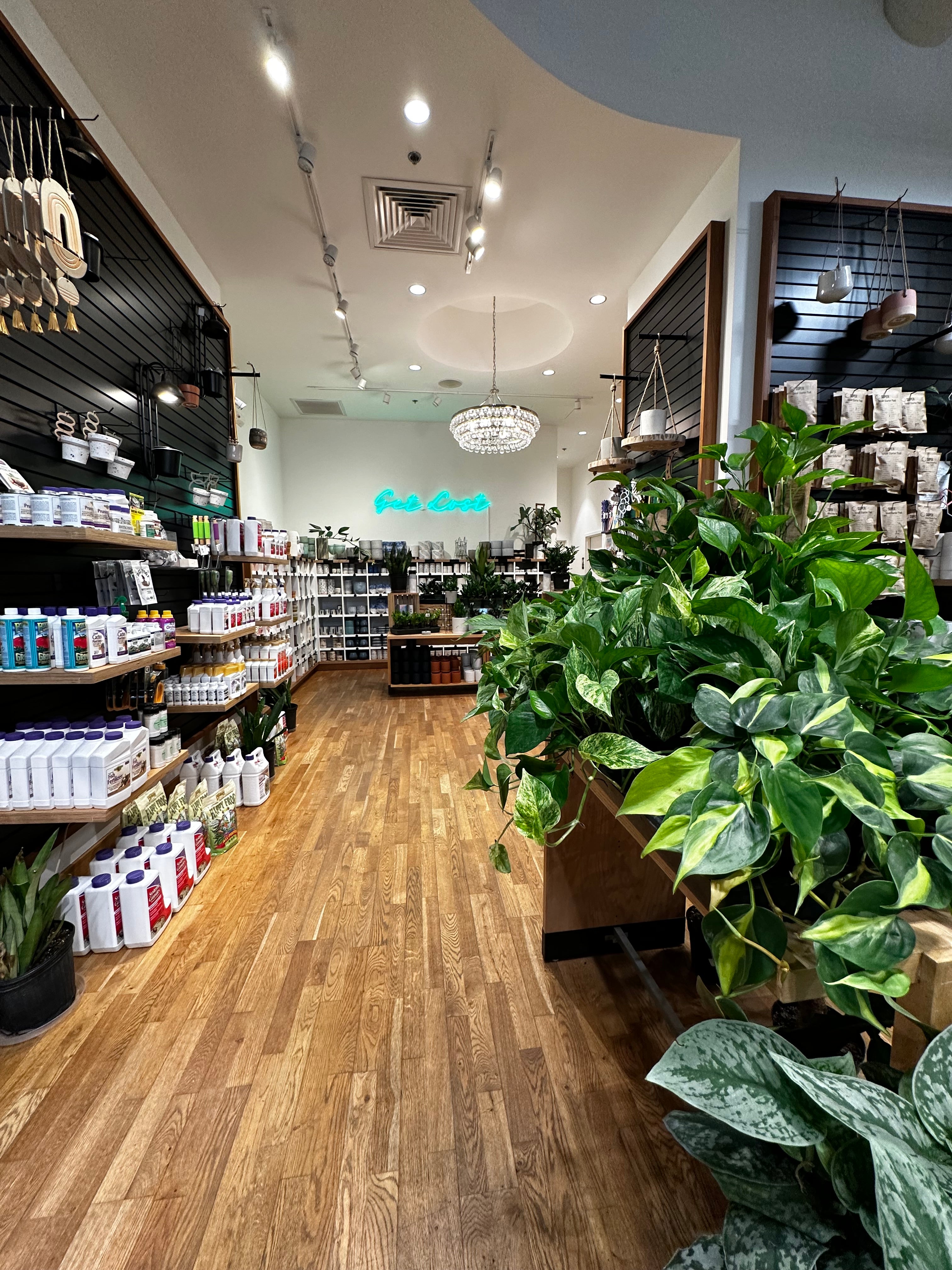
Understanding when to fertilize can be a little trickier than simply ordering DoorDash. A very common sign that your plant needs fertilizer is browning or yellowing along the leaf margin. You also often find that young leaves fall off even when there are no issues with watering or pests. Another common sign is that new growth looks a little funky, for example leaves that are twisted, stuck, or odd shapes.
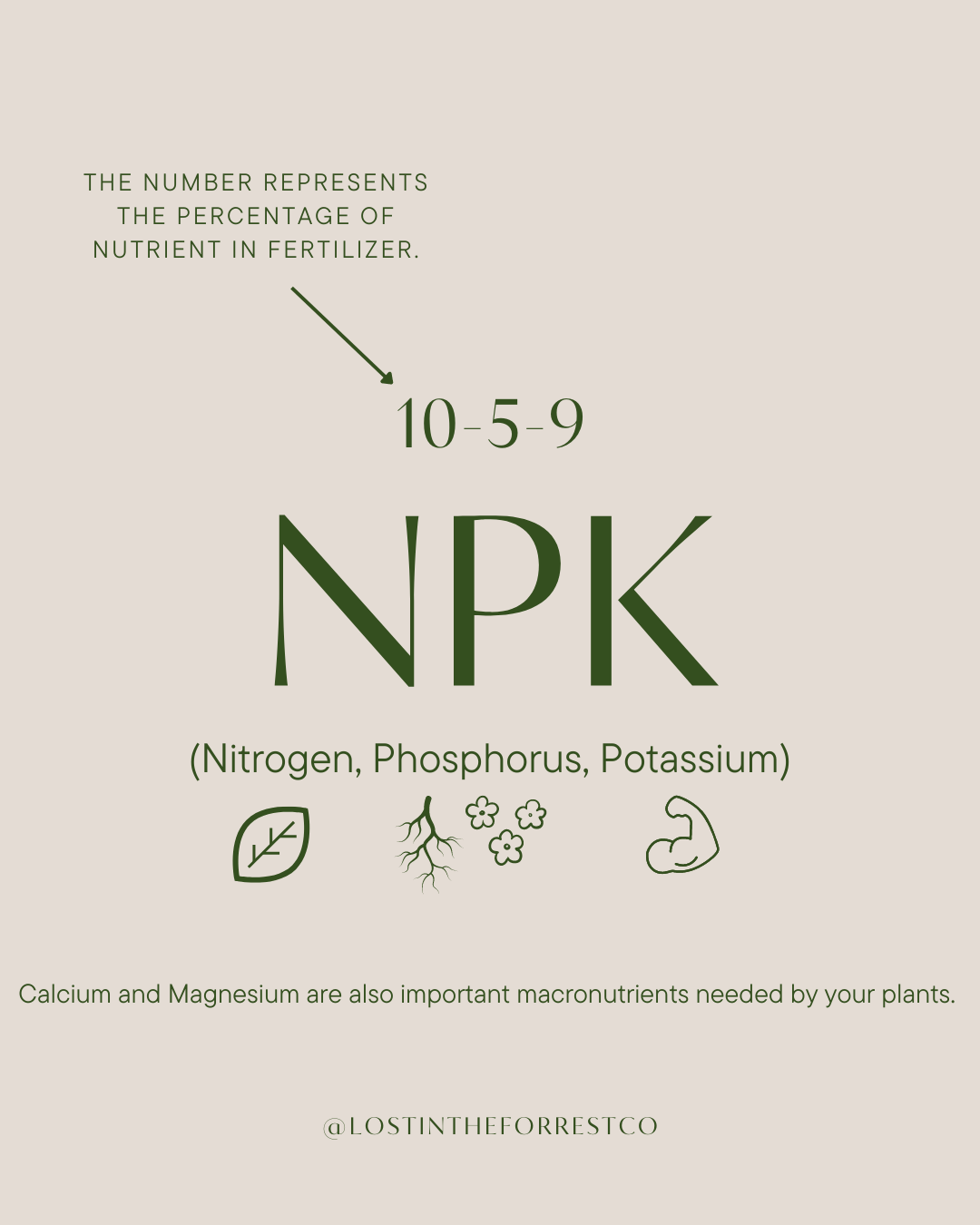
Researchers study and experiment with fertilizers to determine the best mix of ingredients to provide your houseplants with the right mix of nutrients. Three of the key ingredients to keeping plants healthy are Nitrogen, Phosphorous, and Potassium.
Most reputable fertilizers will display three numbers, for example 10-10-10. This grouping of numbers is referred to as a NPK ratio. NPK stands for Nitrogen, Phosphorous, and Potassium. In a 10-10-10 fertilizer, the mixture is comprised of 10% Nitrogen, 10% Phosphorous, 10% Potassium. The remaining 70% is the carrier product.
Nitrogen promotes photosynthesis and encourages shoot and leaf growth. A common sign that your plant has a nitrogen deficiency is yellow along the margin of a leaf.
Phosphorus encourages root and flower growth. Plants that have recently been reported often need higher amounts of Phosphorus.
Potassium helps to regulate the plant’s CO2 intake, helped prevent disease, and is generally good for a plant’s overall health. Think of Potassium like a multivitamin supplement.
NPK are the main macronutrients houseplants need, but keep in mind that they also need smaller amounts of Calcium, Magnesium, and Sulfur. These minerals are naturally occurring in nature and plants native to different regions prefer higher or lower amounts depending on their natural habitat.
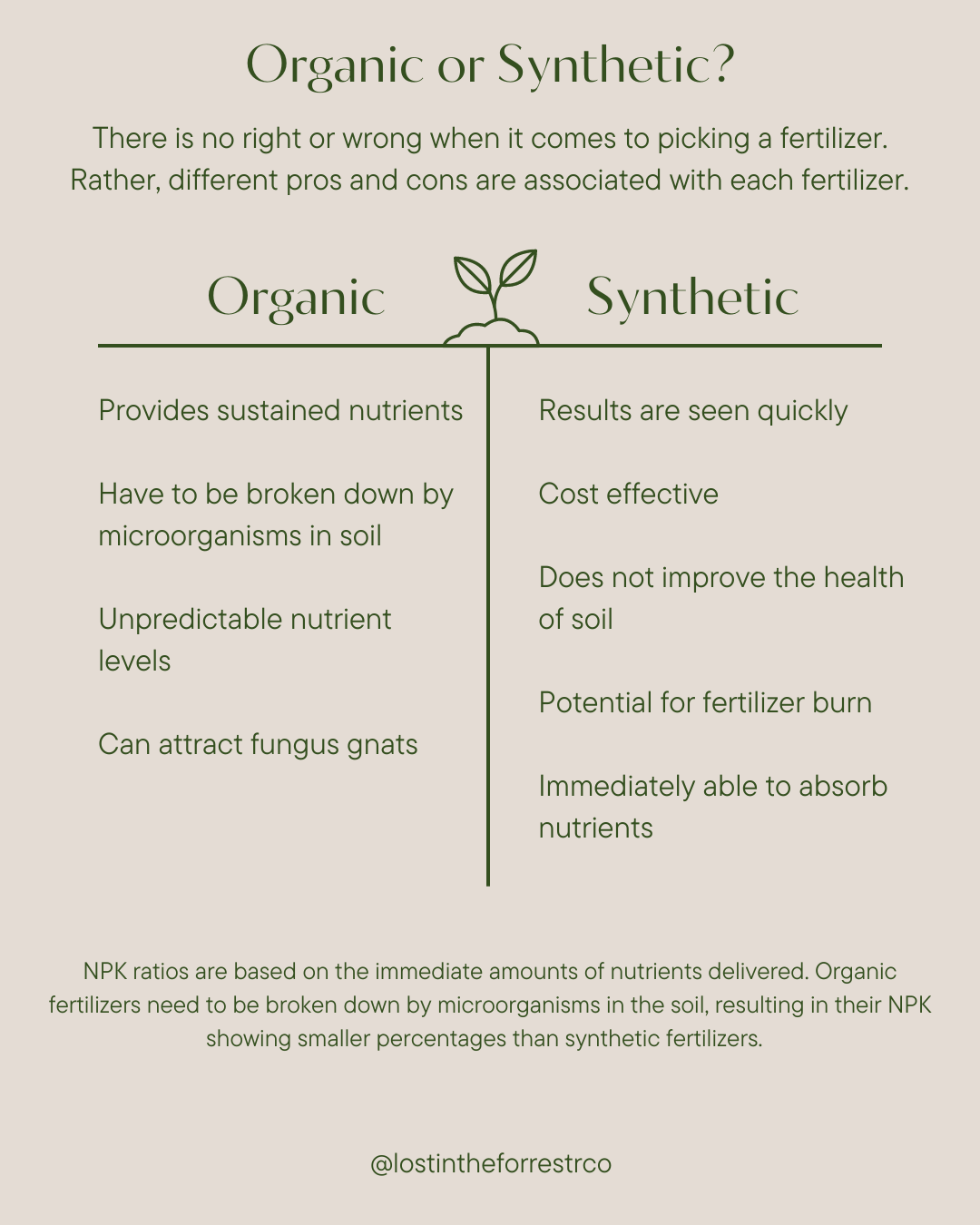
Plants do not magically absorb nutrients in any form, but can only absorb certain ionic compounds. For example, Nitrogen can only be absorbed by plants as Nitrate (NO3-). Commercial fertilizers provide these nutrients to plants in a “ready to consume” format. Since the nutrients are in the consumable form, plants absorb them immediately. You can think of this like a shot of espresso. The plant will benefit from the nutrients immediately, but the positive effects will wear off quickly, which is why regular feedings are important.
Are there organic options?
There are a variety of reasons you may want to explore using organic fertilizer. While synthetic fertilizers provide nutrients in an immediately consumable format, organic fertilizers have to be broken down by microorganisms in the soil before the plant can absorb the nutrients. While your plants will not benefit immediately, organic fertilizers are usually long-lasting because they continue to feed as they are broken down. They can also lead to long-term benefits like improved soil structure and healthy levels of microorganisms.
Picking a Fertilizer
A good place to start is looking for the NPK, if what you are using does not have one, maybe think about trading it in. A well balanced fertilizer is a great place to start. If you want to dive deeper, thinking about your goal of fertilizing is important.
For example, if you want your Hoyas to bloom, using a fertilizer with higher percentages of PhosPhosphorus is a good place to start! Alocasia and Monstera are heavy feeders, use a fertilizer with higher Nitrogen percentage.
We hope this helps provide some context and guidance for you as you feed your hungry plants!
Thanks for reading, untill next week...GET LOST
LITF


